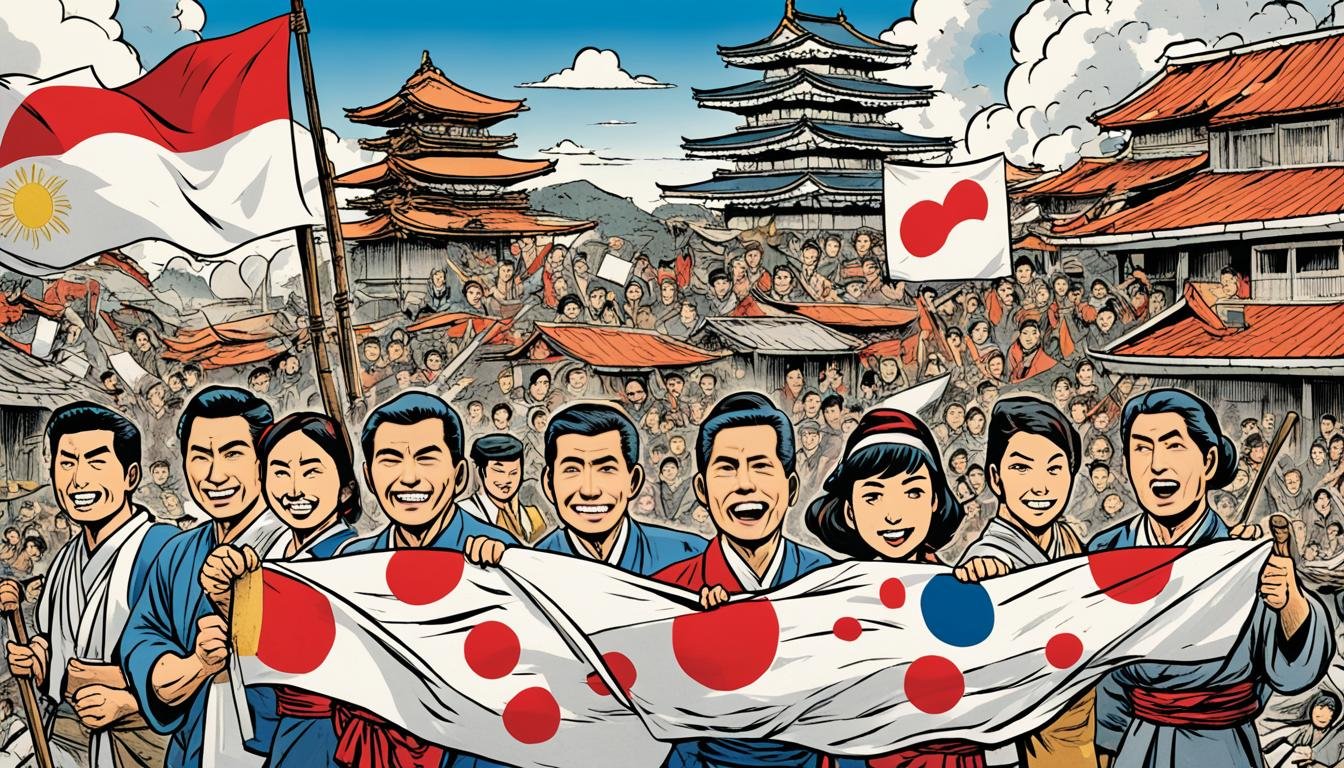Did you know that during the Japanese invasion of the Philippines in World War II, there were Filipinos who actively supported and aligned themselves with the Japanese forces? Yes, contrary to popular belief, a significant number of Filipinos displayed loyalty to Japan during this tumultuous period.
Despite the atrocities committed by the Japanese military and the subsequent suffering endured by the Filipino people, there were complex dynamics at play that led to this unexpected loyalty. Understanding the factors that influenced Filipino collaboration can shed light on the intricate history of the Japanese occupation of the Philippines.
In this article, we will delve into the topic of Filipinos’ loyalty during the Japanese invasion, exploring the historical context, cultural perspectives, and the formation of a puppet government. We will also examine the everyday life of Filipinos under Japanese rule and the emergence of guerrilla resistance movements.
Ultimately, the story of Filipinos’ loyalty during the Japanese occupation is one that challenges simplistic narratives. By examining the complexities of allegiance and collaboration, we can gain a deeper understanding of this pivotal chapter in Philippine history.
Key Takeaways:
- Contrary to popular belief, a significant number of Filipinos displayed loyalty to Japan during the Japanese invasion of the Philippines in World War II.
- Understanding the factors that influenced Filipino collaboration can help unravel the complexities of the Japanese occupation.
- The formation of a puppet government and everyday life under Japanese rule shaped the dynamics of loyalty and resistance among the Filipino population.
- Guerrilla resistance movements emerged as a means of actively opposing the Japanese occupiers.
- The story of Filipinos’ loyalty challenges simplistic narratives and offers insights into the complex history of the Japanese occupation of the Philippines.
For a comprehensive exploration of the liberation of the Philippines, visit this article by Cecilia Gaerlan at The National WWII Museum.
The Prelude to Japanese Occupation
In order to understand the Japanese occupation of the Philippines during World War II, it is important to examine the events that preceded it. This section provides a historical overview of the prelude to Japanese occupation, including the timeline of the Japanese advance on the Philippines, the initial response of the Philippine and American military, and the fall of Manila that ultimately led to the establishment of Japanese control over the country.
Timeline of the Japanese Advance on the Philippines
The Japanese invasion of the Philippines began on December 8, 1941, just hours after the attack on Pearl Harbor. In a coordinated assault, Japanese forces launched air attacks on key military installations and conducted amphibious landings on various islands in the Philippines. The timeline highlights the rapid and relentless advance of the Japanese forces throughout the archipelago, capturing key cities and strategic locations.
Initial Philippine and American Military Response
The Philippine and American military forces faced significant challenges in defending the Philippines against the Japanese invasion. Despite their best efforts, they were ill-prepared and lacked the necessary resources to counter the superior Japanese forces. This section explores the initial military response, the strategies employed, and the difficulties encountered in the face of overwhelming odds.
The Fall of Manila and Establishment of Japanese Control
The fall of Manila, the capital city of the Philippines, was a significant turning point in the Japanese occupation. After intense fighting and heavy bombardment, Manila was ultimately captured by Japanese forces in January 1942. With the fall of the city, the Japanese established control over the seat of government and began to implement their policies and regulations across the country. This section examines the events surrounding the fall of Manila and the subsequent establishment of Japanese control over the Philippines.
Understanding Filipino Loyalty to the Invaders
To comprehend the complexities of Filipino loyalty during the Japanese invasion of the Philippines, it is essential to explore the historical perspective on Filipino-Japanese relations and the concept of loyalty deeply embedded in Filipino culture.
Historical perspective on Filipino-Japanese relations
Before and during World War II, Filipino-Japanese relations were characterized by a complex interplay of political, economic, and cultural factors. The Philippines, then a US colony, had enjoyed amicable ties with Japan, which emerged as a formidable power in East Asia. However, the Japanese occupation dramatically altered the dynamics between the two nations. The invasion created a rift that tested the bonds formed over years of diplomacy and trade.
The initial expectation of the Filipinos was that the Japanese would liberate them from American colonial rule. This sentiment, fueled by nationalism, led some Filipinos to collaborate with the invaders or view them favorably. However, as the occupation unfolded, it became evident that the Japanese sought dominance and exploited the resources of the Philippines, fostering hostile sentiments among the Filipino population.
The concept of loyalty in Filipino culture
The concept of loyalty holds significant cultural importance in Filipino society. Known as “katapatan” or “pagkamatapat,” it encompasses allegiance, fidelity, and devotion to individuals, families, communities, and even nations. Filipino loyalty values emphasize the importance of maintaining harmony and fulfilling social obligations.
It is within this cultural framework that Filipino reactions to the Japanese occupation need to be understood. Loyalty, in this context, was not a simple binary choice between collaboration and resistance but a multifaceted spectrum influenced by various factors such as survival, self-preservation, and protecting loved ones. Individuals faced challenging circumstances that demanded difficult decisions and compromises.
To gain a comprehensive understanding of Filipino loyalty during the occupation, it is essential to explore the intricate historical perspective and cultural underpinnings that shaped Filipino-Japanese relations and influenced the actions of the Filipino people.
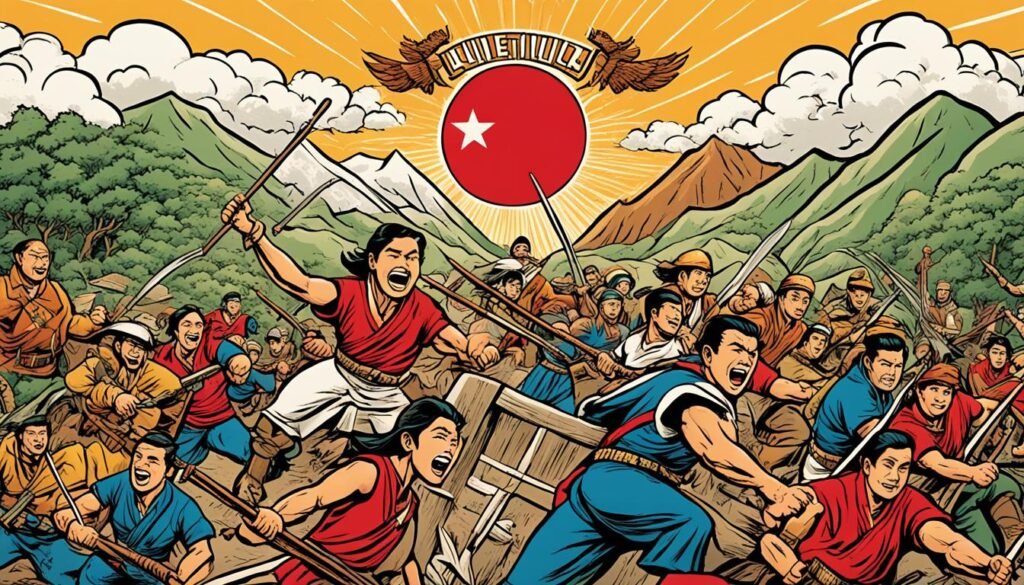
For more information on the Japanese occupation of the Philippines, please visit this link.
The Formation of the Puppet Government
In the wake of their occupation, the Japanese established a puppet government known as the Second Philippine Republic, which was tasked with governing the occupied country. This government, headed by José P. Laurel, was a collaborationist regime that aimed to legitimize Japanese control over the Philippines. One of the key components of this puppet government was the Philippine Executive Commission (PEC), which played a crucial role in implementing Japanese policies and maintaining their authority.
The PEC, comprised of prominent Filipino figures, served as a conduit between the Japanese-installed government and the Filipino population. Its members included politicians, businessmen, and intellectuals who chose to collaborate with the Japanese invaders. The PEC was responsible for enacting policies that aligned with Japanese interests, such as promoting Japanese culture and language, suppressing dissent, and exploiting Filipino resources to support Japan’s war efforts.
While the establishment of the puppet government allowed the Japanese to exert control over the Philippines, it also created divisions among the Filipino population. Some saw collaboration as a way to protect their families and communities from the harsh realities of Japanese occupation, while others felt a deep sense of betrayal to their nation and resisted the puppet government.
The role of the Philippine Executive Commission was pivotal in facilitating the implementation of Japanese policies and maintaining control over the occupied Philippine territory. By collaborating with the Japanese-installed government, the PEC contributed to the functioning of the puppet government and the perpetuation of Japanese rule.
| Notable Filipino Figures in the Japanese-installed government | Position |
|---|---|
| Benigno S. Aquino Sr. | Minister of Agriculture and Commerce |
| Camilo Osías | Minister of Education |
| Osmundo de Guzmán | Director of National Defense |
| Juan Labrador | Minister of Health |
These notable Filipino figures within the puppet government, while fulfilling roles within the Japanese-installed administration, remained controversial figures in post-war Philippines due to their collaboration with the occupiers. Their involvement in the government was seen by many as a betrayal of their duty to the Filipino people and their country.
Life Under Japanese Rule
During the Japanese occupation, Filipinos endured challenging living conditions and faced a significant impact on their economic and social well-being. The occupation brought about a multitude of changes that influenced every aspect of daily life for the Filipino population.
Under Japanese rule, Filipinos experienced various conditions that significantly affected their way of life. These conditions ranged from strict curfews and limited freedom of movement to strict censorship and surveillance. Filipinos had to navigate through these restrictions carefully to avoid consequences. Additionally, they were subject to forced labor, where many were compelled to work in Japanese-owned industries or agriculture.

The economic impact of Japanese rule on Filipinos was substantial. The Japanese implemented policies that prioritized their own interests, leading to the exploitation of local resources and markets. As a result, Filipinos experienced economic hardships, including inflation, scarcity of basic goods, and reduced job opportunities, exacerbating the already challenging living conditions.
The social impact of Japanese rule also had a profound effect on Filipinos. The occupation disrupted traditional social structures and cultural practices. Filipinos were forced to conform to Japanese ideals and beliefs through the imposition of Japanese culture and language. The Japanese also implemented a system of punishment and reward, which further contributed to the division and tension within Filipino communities.
To gain a deeper understanding of the conditions during the Japanese occupation and its impact on Filipinos, it is essential to explore historical accounts and primary sources that shed light on this significant period in Filipino history. By examining these sources, we can gain insights into the complexity of life under Japanese rule and its lasting effects on the Filipino people.
If you’re interested in learning more about life under Japanese rule, click here for additional resources.
Guerrilla Resistance Movements
This section will focus on the important role played by guerrilla resistance movements during the Japanese occupation of the Philippines. These guerrilla groups were composed of brave Filipinos who actively resisted the Japanese forces and fought for the liberation of their country.
The Role of Guerrillas in Resisting the Japanese
Guerrilla resistance movements were a key component of the Filipino resistance against Japanese occupation. These dedicated fighters employed unconventional tactics to disrupt Japanese operations and undermine their control. They engaged in sabotage, ambushes, and hit-and-run attacks, making it difficult for the Japanese to maintain order and control over the occupied territories.
The guerrillas became a persistent thorn in the side of the Japanese forces, constantly harassing them and disrupting their supply lines. They carried out operations such as blowing up bridges, derailing trains, and cutting communication lines, effectively hampering the enemy’s movements and causing significant damage.
Additionally, the guerrillas played a crucial role in gathering intelligence for the Allied forces. They provided valuable information about Japanese troop movements, fortifications, and other vital details that helped in planning strategic Allied offensives.
American Support and Coordination with Local Resistance
American support was instrumental in the success of the guerrilla resistance movements. Even before the formal establishment of the resistance, American military advisors and intelligence personnel were providing training, equipment, and guidance to the Filipino guerrilla fighters.
The relationship between the guerrilla groups and the American military was characterized by close coordination and collaboration. American forces recognized the strategic importance of the guerrilla resistance in weakening the Japanese occupiers and preparing the way for the eventual liberation of the Philippines.
The Americans provided crucial support in the form of weapons, ammunition, communication equipment, and supplies to the guerrillas. They also facilitated the training of guerrilla fighters, helping them develop military skills and tactics that were vital for their operations against the Japanese.
This partnership between American forces and local resistance groups was key in securing the eventual Allied victory in the Philippines. The guerrillas effectively complemented the efforts of the American military, working together towards the common goal of liberating the Philippines from Japanese control.
Overall, the guerrilla resistance movements played an essential role in the Filipino people’s fight against the Japanese occupation. Their bravery, determination, and unwavering commitment to their country’s freedom became a symbol of the indomitable spirit of the Filipino people. Through their actions, they contributed significantly to the eventual liberation of the Philippines and left a lasting legacy of courage and resilience.
The Complexity of Loyalty
During the Japanese occupation of the Philippines, the loyalty of the Filipino population was far from a straightforward matter. It is important to understand that there were varied responses to the occupation, showcasing the complexity of loyalty among Filipinos. While some collaborated with the Japanese, others actively resisted their presence, leading to a dichotomy of loyalty.
The Filipino responses to the Japanese occupation were influenced by a multitude of factors, including fear, survival instincts, and personal beliefs. For some, collaboration with the Japanese seemed like the only viable option in the face of harsh consequences. They may have cooperated out of a desire to protect their families, preserve their social standing, or ensure their own safety.
On the other hand, there were Filipinos who staunchly resisted the Japanese occupation. These brave individuals joined guerrilla movements, engaged in acts of sabotage, and risked their lives to defy the invaders. The resistance efforts were often coordinated with American forces, which brought about a collaborative effort to liberate the Philippines from Japanese control.
This loyalty dichotomy created complex dynamics within Filipino society. Some viewed collaborators as traitors, while others understood that survival dictated difficult choices. The resistance fighters were celebrated as heroes, but even among them, loyalty was not always a straightforward concept. Allegiances within the resistance movement were tested, and conflicts arose due to differing ideologies and personal motivations.
Understanding the complexity of loyalty during the Japanese occupation sheds light on the experiences of Filipinos during this tumultuous time. It paints a nuanced picture of the choices they had to make and the challenges they faced. To delve deeper into this complex topic and explore the different responses of Filipinos, you can check out this resource on the complexity of loyalty in historical contexts.
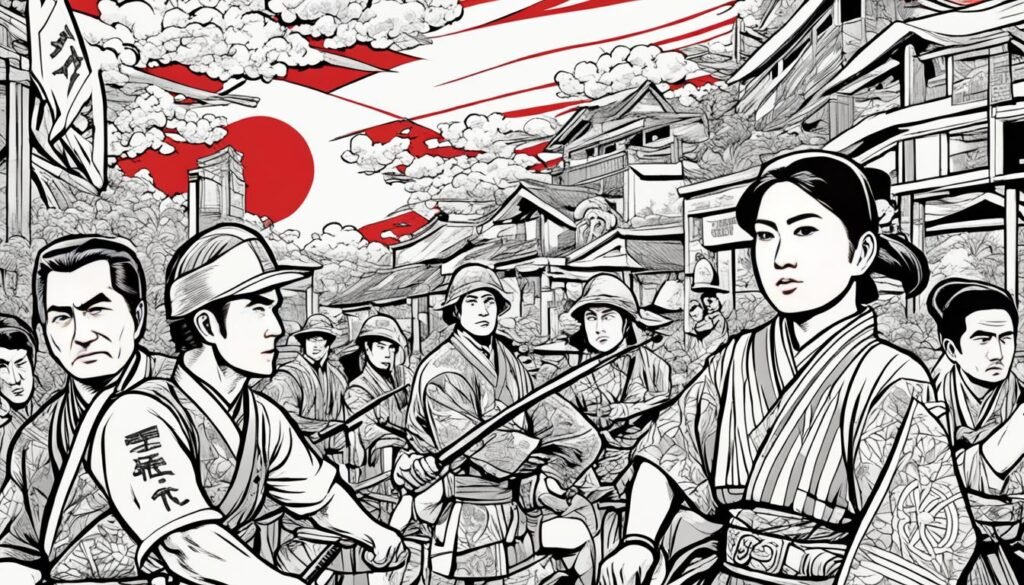
Next, we will delve into another significant aspect of the Japanese occupation—the role of ‘comfort women’ and the forced servitude of Filipino women during this period.
The Role of ‘Comfort Women’
This section will address the issue of ‘comfort women’ during the Japanese occupation of the Philippines. It will examine the forced servitude of Filipino women who were coerced into sexual slavery by the Japanese military. The exploitation of ‘comfort women’ was a tragic reality with severe and long-lasting consequences for the victims.
During the occupation, many Filipino women were forcibly taken from their homes, subjected to physical and sexual abuse, and forced to provide sexual services to Japanese soldiers. These women suffered immense physical and psychological trauma, enduring a degrading and dehumanizing existence. The systematic nature of this widespread practice highlights the extent of the suffering endured by these women.
Unfortunately, the issue of ‘comfort women’ remained largely unacknowledged for decades. It was only in recent years that efforts have been made to seek justice, recognition, and reparations for the survivors. Many ‘comfort women’ from the Philippines have come forward to share their stories, seeking acknowledgement and apology for the atrocities they experienced.
The post-war recognition and reparations for the survivors of ‘comfort women’ is an ongoing struggle. Efforts have been made to raise awareness and push for formal acknowledgment of the historical injustices committed against these women. Various organizations and advocates continue to advocate for justice and reparations for the survivors, highlighting the importance of addressing this dark chapter in history.
It is crucial to confront the painful past and ensure that the stories of ‘comfort women’ are heard and validated. By acknowledging these experiences and advocating for justice, we can honor the resilience and strength of the survivors and work towards creating a more just and inclusive society.
For more information on this topic, you can visit the Ministry of Foreign Affairs of Japan’s official website.
Military Engagements: Defense and Counteroffensives
This section will focus on the military engagements that took place during the Japanese occupation of the Philippines. Despite the overwhelming power of the Japanese forces, Filipino and American soldiers mounted a fierce defense in an attempt to protect their homeland. They engaged in courageous counteroffensives and major battles, displaying remarkable resilience and determination.
One of the most infamous events during this period was the Bataan Death March, which occurred after the fall of Bataan in April 1942. Filipino and American prisoners of war who surrendered were subjected to a brutal forced march to prison camps, enduring extreme hardships, abuse, and starvation at the hands of their captors. The Bataan Death March stands as a symbol of the sacrifices made by those who resisted the Japanese occupation.
The Philippine contribution to the Allied victory cannot be overstated. Filipino soldiers played a vital role in the liberation of the Philippines, fighting side by side with American forces during the intense battles that drove out the Japanese occupiers. Their courage, bravery, and unwavering commitment to the cause were instrumental in reclaiming Philippine sovereignty and securing the Allied victory in the Pacific theater of World War II.
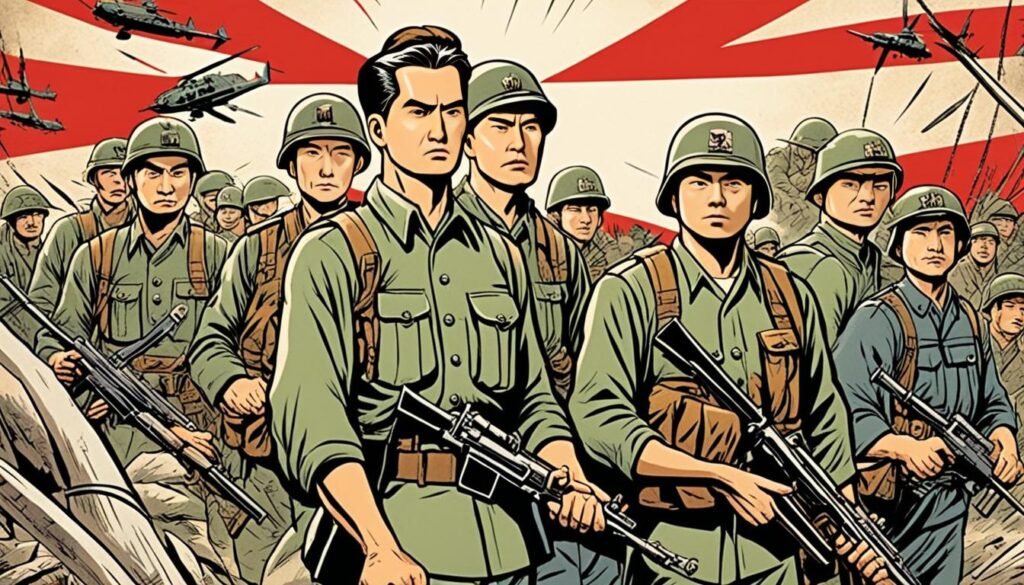
These military engagements, marked by defense and counteroffensives, were a testament to the indomitable spirit and resilience of the Filipino and American forces. Despite the challenges they faced, they fought valiantly, seeking to defend their homeland and bring an end to the Japanese occupation. The sacrifices made by those who fought and lost their lives will always be remembered as a tribute to their unwavering dedication and commitment to freedom.
“Our men fought like tigers, and the men licked the highway clean…”
– General Douglas MacArthur on the Bataan Death March
The resilience and bravery shown during the military engagements in the Philippines serve as a lasting reminder of the sacrifices made and the determination to reclaim freedom and independence. It is crucial to remember and honor the contributions of Filipino and American soldiers who fought side by side to secure the Allied victory and liberate the Philippines from Japanese occupation.
Next, we will delve into the complexity of loyalty among Filipinos during the occupation, exploring the varied responses and examining the dichotomy of collaborators and resistors. Stay tuned for more insights into this fascinating chapter in Philippine history.
Source: Washington Post: Valery Zaluzhny, commander of Ukraine’s ‘Shadow Camp,’ removed
Loyal to the End?
As the Japanese occupation of the Philippines neared its end, questions arose regarding the allegiance of the Filipino people. Had they remained loyal to their invaders or had there been a shift in loyalty? This section will examine the complex dynamics of Filipino allegiance during the final stages of the occupation.
Examination of Filipino Allegiance at the Close of Occupation
During the later years of the occupation, many Filipinos faced choices influenced by both survival instincts and their desire for liberation. Some individuals collaborated with the Japanese, either out of necessity or due to personal beliefs. Others, driven by resistance and patriotism, joined guerrilla movements to actively oppose the invaders.
The examination of Filipino allegiance at the close of the occupation reveals a multitude of factors that shaped individual choices. These factors include the personal experiences of Filipinos under Japanese rule, their relationship with members of the guerrilla resistance, and their assessment of the overall situation both within the Philippines and in the broader context of the war.
The Legacy of Loyalty Debate Post-Liberation
The loyalty debate that surrounded the Filipino people during and after the occupation continues to be a topic of discussion and analysis. Various perspectives exist regarding the decisions made by Filipinos during those challenging times, with some arguing for a broader understanding of the complexities involved.
This ongoing debate reflects the desire to comprehend the motivations and experiences of the Filipino population during the occupation. It also serves as a reminder of the enduring legacy of the occupation and its impact on post-liberation Philippines.
| Allegiance | Occupation | Filipino loyalty | Debate | Post-Liberation Legacy |
|---|---|---|---|---|
| Factors influencing allegiance | Complex dynamics | Continuing discussion | Various perspectives | Enduring impact |
| Survival instincts | Individual choices | Comprehending motivations | Understanding complexities | Legacy of the occupation |
Post-War Reckoning and Recognition
The Rescission Act of 1946 and its impact on Filipino veterans
The end of World War II marked a period of post-war reckoning for Filipino veterans who had fought with unwavering loyalty during the conflict. However, their sacrifices and service were not immediately recognized and rewarded. One key piece of legislation that had a significant impact on Filipino veterans was the Rescission Act of 1946.
The Rescission Act, also known as the Filipino Veterans’ Rescission Act, was passed by the U.S. Congress in 1946. It significantly affected the benefits and rights of Filipino veterans who had served under the United States Armed Forces in the Far East (USAFFE) during the war. The act stipulated that only veterans who were American citizens at the time of their service would receive the same benefits as their American counterparts.
The impact of the Rescission Act was deeply felt by Filipino veterans who had risked their lives and demonstrated wartime loyalty. Many of these veterans were now denied the recognition and support they deserved. The act created disparities between American and Filipino veterans in terms of healthcare, pensions, and other privileges.
Contemporary efforts to honor Filipino wartime loyalty
Despite the challenges imposed by the Rescission Act, there have been ongoing efforts to honor and recognize the loyalty and contributions of Filipino veterans during World War II. Organizations, individuals, and governments have worked tirelessly to address the injustices and provide support to these veterans.
The Filipino Veterans Recognition and Education Project (FilVetREP) is one such organization that actively advocates for the formal recognition of Filipino veterans and the restoration of their benefits. Through educational initiatives, advocacy campaigns, and legislative efforts, FilVetREP works to raise awareness about the sacrifices made by Filipino veterans and push for the restoration of their rightful recognition.
The Philippine government has also taken steps to honor Filipino wartime loyalty. Various awards and benefits have been instituted to recognize the brave service of Filipino veterans. One of the significant recognitions is the Philippine Liberation Medal, which is awarded to veterans who participated in the liberation of the Philippines from Japanese occupation.
Furthermore, the United States government has made efforts to rectify the injustices caused by the Rescission Act. In 2009, the Filipino Veterans Equity Compensation fund was established as part of the American Recovery and Reinvestment Act. This fund provided a one-time payment to eligible Filipino veterans as a gesture of recognition for their service.
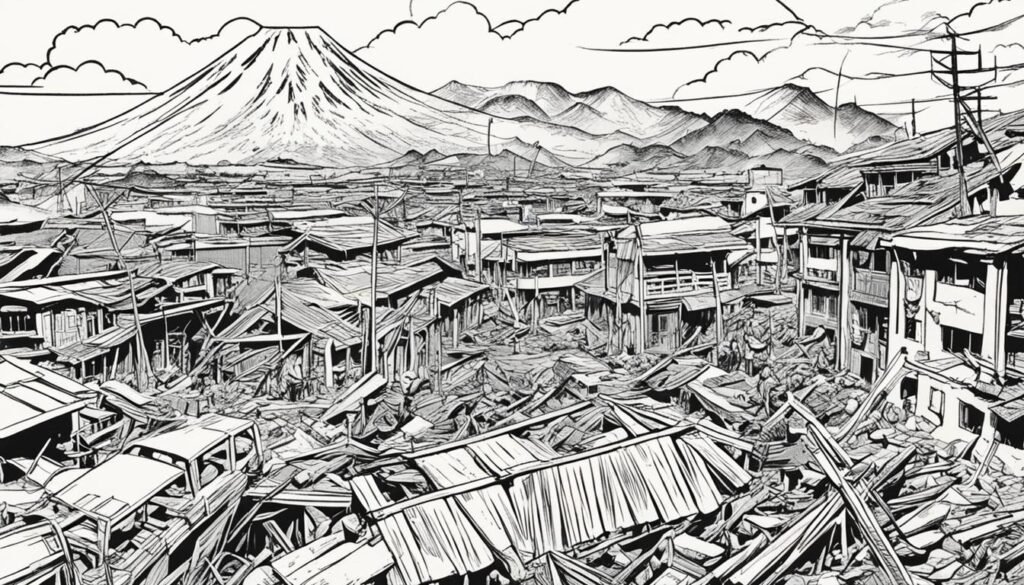
Despite the progress made in recent years, there is still work to be done to fully recognize and honor the wartime loyalty of Filipino veterans. Efforts continue to ensure that these veterans receive the benefits, healthcare, and recognition they deserve for their sacrifices.
Liberty at Last: The Return to Independence
After years of Japanese occupation, the Philippines longed for the restoration of their independence. General Douglas MacArthur’s promise to return gave hope to the Filipino people, igniting a ray of optimism in their hearts.
MacArthur’s promised return to the Philippines
In October 1944, General MacArthur declared, “I shall return,” as he left the Philippine shores. This iconic proclamation became a symbol of hope and determination for the Filipino people. They eagerly awaited MacArthur’s arrival to liberate their homeland from Japanese control.
Transition from Japanese occupation to independent republic
The transition from Japanese occupation to an independent republic was not without its challenges. As General MacArthur’s forces made their triumphant return in 1945, it marked the beginning of a new chapter for the Philippines. The Filipino people, with renewed strength and resilience, embarked on the path to rebuilding their nation.
The process of transitioning from Japanese rule to an independent Philippines required careful and strategic planning. The devastated economy had to be rehabilitated, and the political landscape had to be reshaped. The Filipino people, exhausted from years of hardship, embraced the opportunity to rebuild their nation and regain their liberty.
With the establishment of the Third Philippine Republic in 1946, the Filipino people finally achieved their long-awaited independence. The transition marked a significant milestone in the country’s history, symbolizing the resilience and determination of the Filipino spirit.
Historical Narratives and Education
In Philippine textbooks and educational materials, the portrayal of loyalty and occupation during World War II is a topic of great significance. Historical narratives play a crucial role in shaping our understanding of the past and present. These narratives not only convey information but also influence public perception and collective memory.
The way loyalty is portrayed in Philippine textbooks is a reflection of how the occupation period is depicted. It is important to examine how historical events and individuals are presented, including their roles, motivations, and actions. By analyzing these portrayals, we can gain insights into the complexities of loyalty during wartime experiences.
Education plays a vital role in preserving the legacy of wartime experiences in the Philippines. By teaching future generations about the occupation period, we ensure that the sacrifices and struggles of the past are not forgotten. Through education, we can pass on the lessons learned and emphasize the importance of peace, resilience, and human rights.
Preserving the legacy of wartime experiences is essential for understanding the impact of occupation on Filipinos and their communities. It allows us to honor the resilience and courage of those who lived through that period. By studying and reflecting on these experiences, we can gain a deeper appreciation for the sacrifices made and the lessons learned from this historical chapter.
“Studying history is important because it helps us understand the complexities of the past and its relevance to the present. It allows us to learn from past experiences and make informed decisions for the future.” – American Historical Association
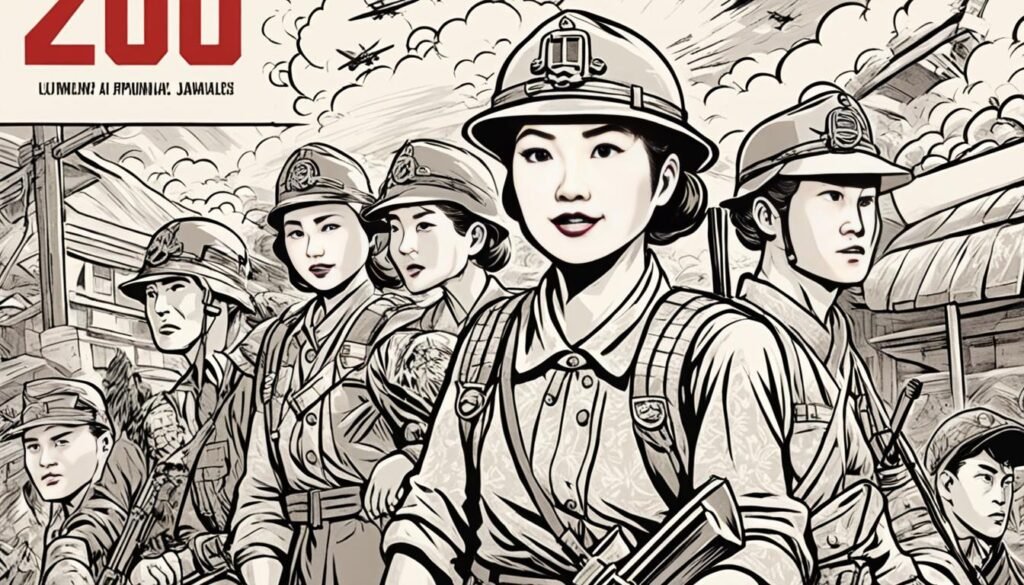
Conclusion
Throughout this article, we have explored the complex dynamics of Filipinos’ loyalty during the Japanese occupation of the Philippines. The historical perspective on Filipino-Japanese relations and the cultural concept of loyalty in Filipino culture played crucial roles in shaping the actions and responses of Filipinos during this period of occupation.
While some Filipinos collaborated with the Japanese invaders, others actively resisted through guerrilla movements, showcasing the varied responses to the occupation. The establishment of a puppet government and the formation of the Second Philippine Republic further exemplified the complexities of loyalty during this time.
Life under Japanese rule was characterized by challenging conditions, with Filipinos facing restrictions, hardships, and economic and social impacts. The issue of ‘comfort women’ during the occupation highlighted the forced servitude of Filipino women and the subsequent efforts for recognition and reparations.
As the occupation neared its end, Filipino allegiance remained a highly debated and controversial topic. The legacy of loyalty during and after the occupation continues to shape historical narratives and education in the Philippines, demonstrating the lasting impact of this complex period in Filipino history.
FAQ
Were Filipinos loyal to Japan during the invasion?
The loyalty of Filipinos during the Japanese invasion of the Philippines in World War II was a complex and varied matter. While some Filipinos collaborated with the Japanese invaders, others actively resisted their occupation. Factors such as historical perspective, cultural concepts of loyalty, and individual circumstances influenced the loyalty or lack thereof among the Filipino population.
What was the timeline of the Japanese advance on the Philippines?
The Japanese advance on the Philippines began on December 8, 1941, shortly after the attack on Pearl Harbor. Within weeks, the Japanese forces captured major cities and strategic locations. The fall of Manila on January 2, 1942, marked the establishment of Japanese control over the country.
How did the Philippine and American military respond initially to the Japanese invasion?
The initial response of the Philippine and American military to the Japanese invasion was met with resistance, but ultimately, they were unable to repel the advancing forces. Despite their efforts, the combined Filipino and American forces were outmatched and overwhelmed by the Japanese military.
How did the establishment of Japanese control over Manila impact the Philippines?
The fall of Manila and the establishment of Japanese control over the city had significant consequences for the Philippines. It marked the beginning of the Japanese occupation, which lasted until the liberation of the country. The occupation brought about various restrictions, hardships, and challenges for the Filipino population.
What was the historical perspective on Filipino-Japanese relations before and during World War II?
Before World War II, Filipino-Japanese relations were characterized by economic ties and cultural exchanges. However, during the war, the invasion and occupation by the Japanese strained relations between the two countries. The actions of the Japanese military during the occupation affected Filipino attitudes and perceptions towards the invaders.
How did the cultural concept of loyalty in Filipino culture influence actions during the occupation?
The cultural concept of loyalty in Filipino culture played a complex role during the occupation. While loyalty to family, community, and nation was ingrained in Filipino values, it was often tested and challenged by the circumstances of the Japanese invasion. Some Filipinos demonstrated loyalty to the invaders, while others remained loyal to the Philippines and resisted the occupation.
What was the role of the Philippine Executive Commission during the occupation?
The Philippine Executive Commission was a collaborationist group established by the Japanese to govern the occupied Philippines. Led by Filipinos handpicked by the Japanese, the commission served as a puppet government that implemented Japanese policies. It aimed to maintain control and subdue resistance within the Filipino population.
How was the Second Philippine Republic created by the Japanese?
The Second Philippine Republic was a government established by the Japanese during their occupation. It was officially proclaimed on October 14, 1943, with José P. Laurel as its president. The republic was recognized by the Japanese as a puppet state, but it was not widely accepted by the Filipino population, who considered it illegitimate.
Who were some notable Filipino figures in the Japanese-installed government?
Some notable Filipino figures in the Japanese-installed government included José P. Laurel, who served as the president of the Second Philippine Republic, and other politicians and intellectuals who collaborated with the Japanese. These figures played various roles within the puppet government, but their legitimacy and legacy remain subjects of controversy.
What were the conditions like for Filipinos under Japanese rule?
Filipinos faced difficult conditions during the Japanese occupation. The occupation brought about restrictions on movements, curfews, forced labor, and other hardships. There were also instances of abuse, violence, and the imposition of Japanese culture and ideology. The economic and social impact of Japanese rule had long-lasting effects on the Filipino population.
How did guerrilla resistance movements contribute to resisting the Japanese occupation?
Guerrilla resistance movements played a crucial role in resisting the Japanese occupation. These groups operated in various regions of the Philippines, engaging in sabotage, intelligence gathering, and hit-and-run attacks against the Japanese forces. The support and coordination between local resistance groups and the American forces were instrumental in undermining Japanese control.
How did Filipinos respond to the Japanese occupation?
Filipinos responded to the Japanese occupation in diverse ways. Some collaborated with the Japanese for survival or personal gain, while others resisted the occupation through guerrilla movements or other forms of active opposition. The varied responses of Filipinos reflect the complexity of loyalty during this period, with collaborators and resistors coexisting in a dichotomy of loyalty.
What is the issue of ‘comfort women’ during the Japanese occupation?
The issue of ‘comfort women’ during the Japanese occupation refers to the forced servitude of Filipino women who were coerced into sexual slavery by the Japanese military. These women were subjected to horrific experiences and endured physical and emotional abuse. Post-war recognition efforts and reparations for the survivors of ‘comfort women’ continue to be significant issues.
What was the Bataan Death March?
The Bataan Death March was a notorious event during the Japanese occupation of the Philippines. It involved the forced march of Filipino and American prisoners of war after the fall of Bataan in April 1942. The prisoners were subjected to brutal treatment, including beatings, starvation, and killings, resulting in the deaths of thousands of individuals.
How did Filipino soldiers contribute to the Allied victory and the liberation of the Philippines?
Filipino soldiers played a crucial role in the Allied victory and the liberation of the Philippines. They fought alongside American forces and participated in key military engagements. Their bravery and sacrifices helped in driving out the Japanese forces and regaining control of the country, ultimately leading to the end of the occupation.
Did Filipino allegiance shift as the Japanese occupation neared its end?
Filipino allegiance during the Japanese occupation varied greatly, and as the occupation neared its end, many Filipinos shifted their allegiance away from the invaders. Growing disillusionment with Japanese rule, coupled with the imminent return of General Douglas MacArthur and the promise of liberation, led to a decline in support for the Japanese among the Filipino population.
How was the loyalty debate during and after the occupation addressed?
The loyalty debate during and after the occupation has been a subject of ongoing discussion. The complex dynamics of loyalty among Filipinos during this period sparked debates and differing opinions. The legacy of the occupation and the loyalty dichotomy that emerged continue to shape discussions and interpretations of this historical period.
What was the impact of the Rescission Act of 1946 on Filipino veterans?
The Rescission Act of 1946 had a significant impact on Filipino veterans who served during World War II. The act sought to revoke benefits and rights previously granted to Filipino veterans, leading to the denial of certain benefits and recognition. The act has been the subject of advocacy, and contemporary efforts aim to address the injustices faced by Filipino veterans.
How has Filipino wartime loyalty been honored and recognized?
Efforts have been made to honor and recognize Filipino wartime loyalty. Various initiatives and ceremonies have been held to commemorate the bravery and sacrifices of Filipino soldiers and resistance fighters during World War II. Recognition of their contributions aims to preserve their legacy and ensure that their stories are not forgotten.
How did the transition from Japanese occupation to an independent republic take place?
The transition from Japanese occupation to an independent republic in the Philippines followed the liberation of the country. General Douglas MacArthur fulfilled his promise to return and played a pivotal role in the successful liberation. The process of transitioning from Japanese rule involved rebuilding and establishing a new government to achieve independence.
How is loyalty and occupation portrayed in Philippine textbooks and educational materials?
The portrayal of loyalty and occupation in Philippine textbooks and educational materials is a topic of discussion and scrutiny. The narratives presented in these materials shape public perception and understanding of this historical period. Preserving the legacy of wartime experiences and ensuring an accurate depiction of the complexities of loyalty and occupation remain essential.
Source Links
- https://en.wikipedia.org/wiki/Japanese_occupation_of_the_Philippines
- https://www.nationalww2museum.org/war/articles/liberation-of-philippines-cecilia-gaerlan
- https://en.wikipedia.org/wiki/Philippine_resistance_against_Japan

